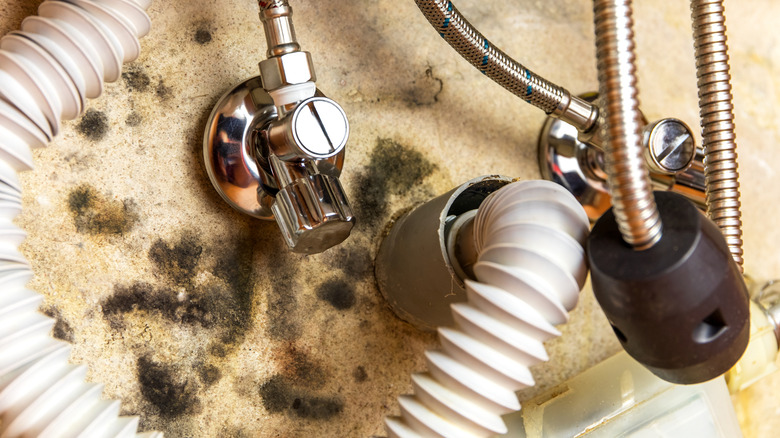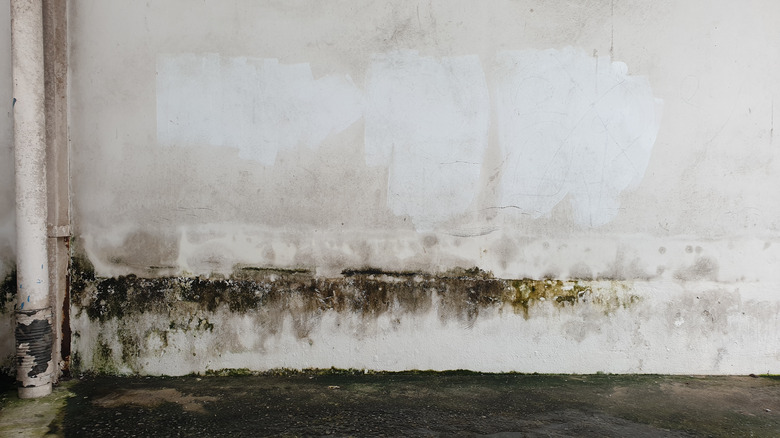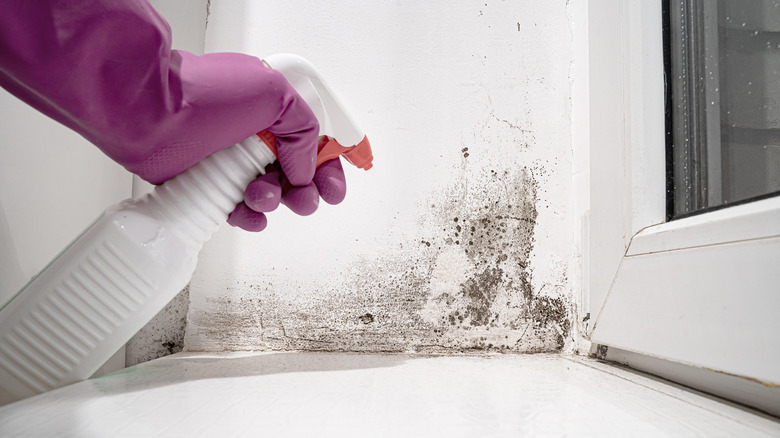Signs That Your Water Lines Are Filled With Hidden Mold
If you're a homeowner, you've likely come across mold in your house — especially in the colder months. This type of fungi build-up is easy to spot, and you probably already know what to do to clean it. However, mold that lives in your water lines is much harder to notice and get rid of. According to Mold Help For You, while it is harder for it to thrive in the insides of your pipes due to the lack of oxygen and food, it can still happen. After all, water pipes provide a dark and wet environment for fungi to develop.
You don't have to worry too much, though, as there are a number of signs you can check your home for. If you spot any of them, we've got you covered on how you can go about getting rid of them, so you can make sure you're using clean water that's safe for consumption.
Watch out for these signs
As Ecowater Systems explains, there are four main signs for you to look out for. The first and most common sign is smelling it when you open your tap. A build-up of mold in and around your shower or accumulation of these fungi on the sides or bottom of your toilet, and the sight of it in other areas in your home are all also signs that you most likely have it growing in your pipes.
Markham Services explains that some might even suffer physical symptoms caused by mold. They include wheezing, irritated eyes or skin, coughing, an irritated throat, a stuffy nose, dizziness, and even sleep and focus trouble. If you notice any of these symptoms and they don't seem to go away, make sure you consult your doctor. Treating your home and plumbing for mold might also be smart, as there's a good chance that it's causing the trouble in the first place.
How to get rid of mold in your water lines
Getting rid of pipe mold is actually quite simple and can be done with common items you probably have in your kitchen. Mold Safe Solutions recommends a method that uses baking soda, vinegar, hydrogen peroxide, and warm water.
First, mix baking soda with some vinegar and pour it into your drain. Let this sit overnight, making sure not to run the tap in the meantime. Next, you're supposed to pour 2 cups of hydrogen peroxide (or white vinegar) down the drain, which will react with the baking soda, causing it to fizz. Finally, after the fizzing has stopped, pour warm water into the pipe to clean it of any remaining baking soda or other chemicals.
They also note that you can use other alternatives such as borax and tea tree oil. Following these steps to get rid of the mold will guarantee that your pipes are clean, keeping you and your family safe.


